Scaling a gnarly overhang like Spider-Man might seem like a superpower but, contrary to what your girlfriend might tell you, bigger doesn’t always mean better. At least in the world of rock climbing, anyway.
Welcome to the world of bouldering! Unlike traditional climbing, bouldering is like the turbocharged version, with shorter and seriously challenging routes that will have you hanging on the edge of your seat, or rather, the edge of a rock.
In bouldering, it’s all about pushing your limits, unleashing your inner Hulk, and showcasing your fancy footwork. We’re talking power moves, technical wizardry, and defying gravity like never before. Forget about endurance, because this time it’s all about unleashing short bursts of insane strength.
As with all types of climbing, bouldering has its own secret language of grading. Just like unlocking levels in a video game, each boulder problem comes with its own unique difficulty rating. These grades allow us to quantify the difficulty of boulder problems, allowing us to measure our ability against other climbers. While this is extremely useful for measuring your on-wall progression, as a beginner, trying to decipher bouldering grades can be a little tricky.
That’s why we have put together this short, no BS, guide on bouldering grades explained. Here you can learn about the different types of bouldering grading systems.
Bouldering Grades Conversion Chart
If you’re looking for a quick comparison chart between the two most popular bouldering grade systems, the V and Font scales, then here it is.
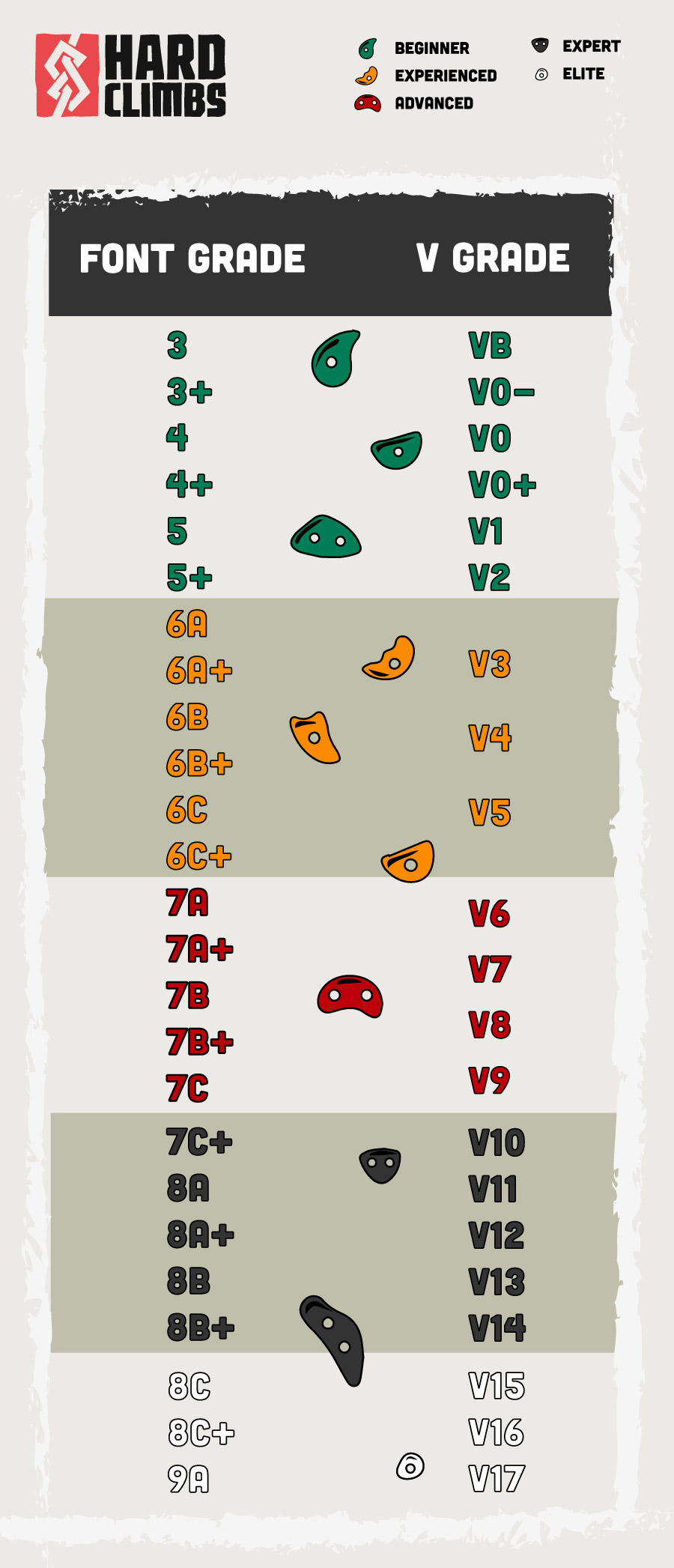
What Are Bouldering Grades?
Similar to any type of climbing, bouldering is graded with a series of numbers and letters. Each grade conveys the difficulty of the route. The higher the grade, the harder the route is. Both indoor and outdoor bouldering is graded, but you’ll find that outdoor climbing will use either the V-Scale or the Font-Scale, which are the two most common bouldering scales.
Indoor bouldering gyms do use the V or Font scale too, but many gyms have their own grading systems. Some are color graded, for example, the yellow routes are the easiest, the green intermediate, and the white routes are the hardest. Here is an example of the indoor bouldering grades used by Urban Climb, a popular gym chain in Australia.
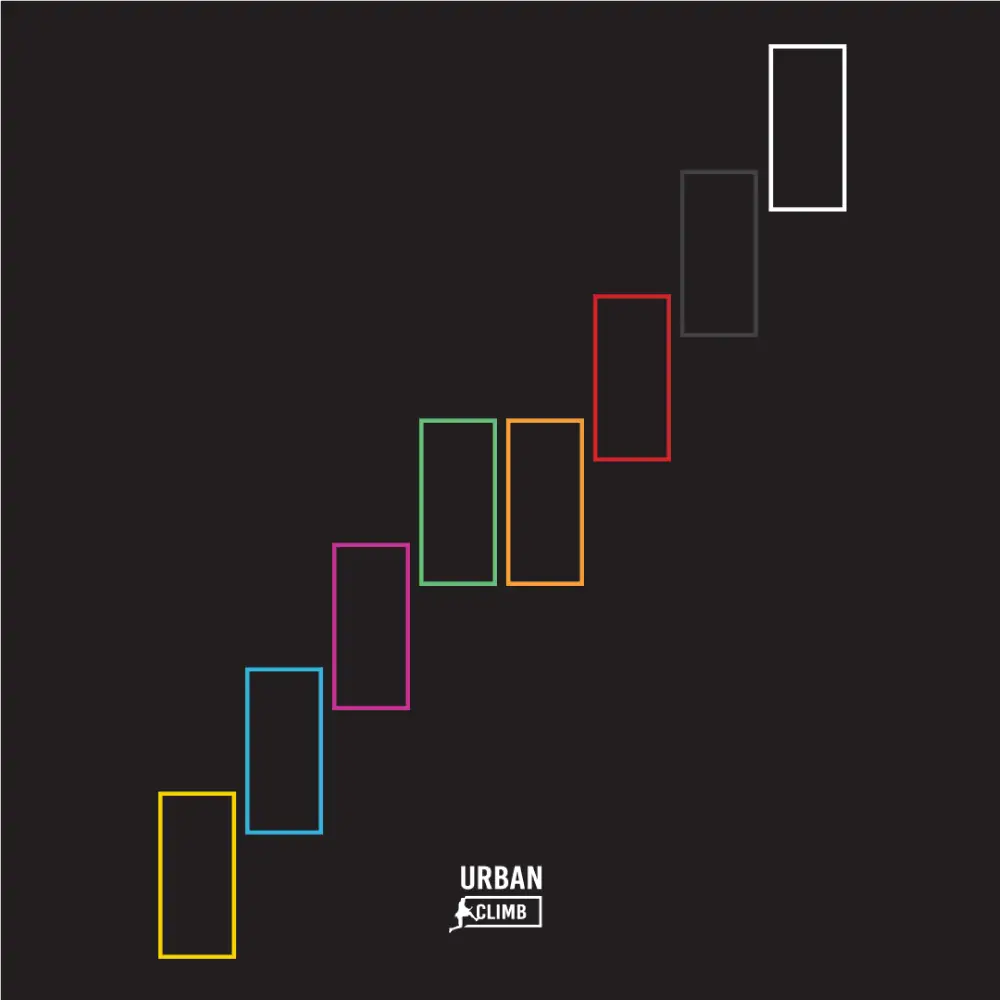
How Are Boulder Problems Graded?
Unsurprisingly, boulders are graded depending on how challenging the problem is. Difficulty depends on the moves, the angle of the wall, and how long the climb is. Generally, bouldering is graded on the difficulty of the route itself and not on the risk factor or how high the boulder is (highballs).
You’ll find that indoor bouldering is usually pretty soft compared to outdoor boulders. This is most likely due to a combination of less skill required to read the route (it is color coded, after all) and also the gyms incentivizing its member with the gratification of achieving harder ascents, in an attempt to encourage people to climb more. Outdoor bouldering is a whole different game. Let me break it down for you.
Indoor Bouldering

Indoor boulder problems are put up by route setters. You’ve probably seen them blocking off certain walls in the gym while they try and test new problems. The route setter will try the climb a few times and grade it. Depending on the climb, they might get some other route setters that are shorter or taller to try it and come to a consensus. Indoor climbing grades tend to be a lot softer than outdoors.
Route setters base the grading on their own attempts, their understanding of the difficulty, and their experience with other boulders of similar grades.
Outdoor Bouldering

In contrast to indoor bouldering, outdoor boulders are graded by the person who did the first ascent. As more and more climbers repeat the problem, a different grade might be suggested. This tends to happen a lot in the climbing community because we climbers love a good heated debate about grades. Yay.
As an indoor boulderer climbing around the V6 grade, I was severely humbled on my recent trip to the Grampians, Australia. You can imagine my disappointment in only being able to do a lowball V2 while I’m embarrassed to say that there were a few V0s I could not start no matter how hard I tried.
The Grampians is notoriously known for having highball and very high starting positions. Plus, the guidebook was written by men, so it makes sense that many of the climbs were graded on their own abilities to do the climb and did not reflect my ability at all.
Bouldering Grades Explained
Unlike sport climbing which has countless grading systems with each country pretty much using their own, luckily there are only a few bouldering grades you need to know about.
The two most popular grading systems are the V-Scale and the Font-Scale. There are other ones, like the B-Scale, the P-Scale, the Joshua Tree Scale, and a few others, but you don’t really need to know those as they are not really used.
The Bouldering V Scale (a.k.a the Vermin Scale)
The V-Scale is as follows:
- V0-V3: Beginner
- V4-V6: Intermediate
- V7-V9: Advanced
- V10-V13: Expert
- V14-V16: Jedi
- V17: Climbing Demi-God
Sometimes, you might see a + or a – after the V grade, but it’s not very common. It further distinguishes the difficulty of the climb, so for example, a V6+ will be slightly harder than a V6. You might also see some problems being graded a ‘VB’. This is even easier than a V0 and is a very basic climb.
The scale begins at V0 for the easiest problem and currently caps out at V17. There are currently ten V17 boulders in the world. It is theoretically open-ended, so there is potential for problems V18 and harder. At a certain point, it will probably reach the physical limits of human performance; however, no one can really say where this limit is for certain.
History
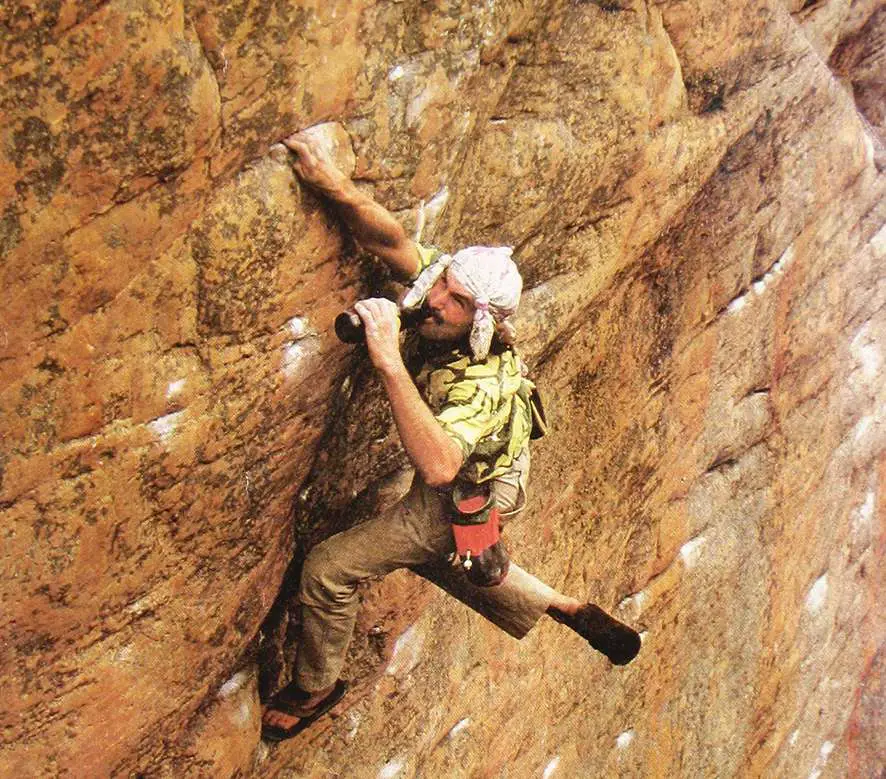
The Vermin Scale is named after American bouldering legend, John Sherman, aka “The Verm”. Sherman pioneered the discipline of bouldering and put up countless boulder problems throughout the United States, primarily concentrated in Hueco Tanks, Texas. There, he put over four hundred first ascents… all without crash pads.
Sherman developed the V scale by necessity, as a proper system was needed to classify the multitude of climbs he put up. Eventually, a publisher asked him to formalize the system, and voila, the Vermin Scale was officially born. Although, there is some speculation that Sherman might have stolen the grading system from Australia (the jury is still out on this one). Now it is used widely in many countries throughout the world and the one I prefer using as it’s the easiest to understand.
Remember when we said climbers love a debate? Well, Sherman has some qualms about the term “redpoint”. Redpointing essentially means sending a boulder after multiple tries. However, when Sherman was redpointing boulders, there weren’t any confidence-inspiring crash pads underneath him. Because of this, he thinks it is discrediting to bouldering’s pioneers to use the same term when using crash pads. Has bouldering gone soft? Sherman would probably say so.
Fountainebleau System
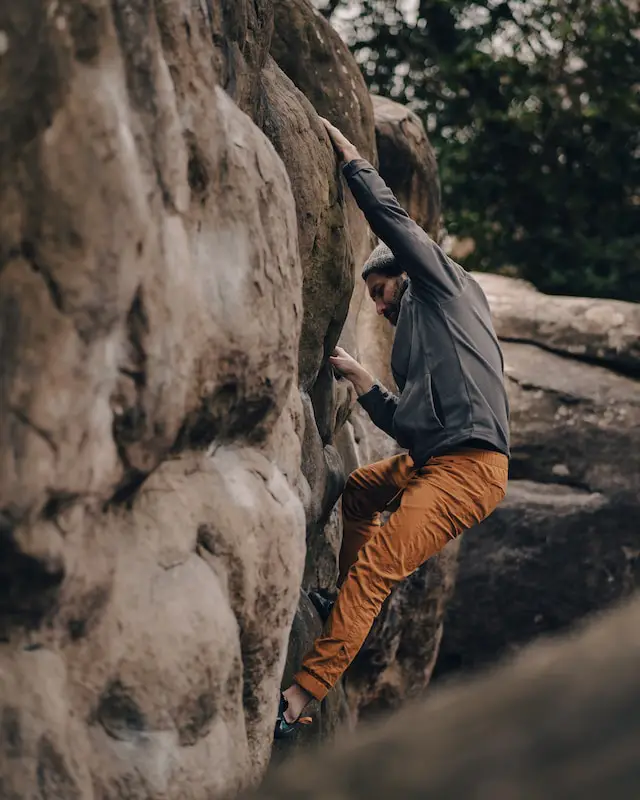
The Fontainebleau scale, or Font Scale, goes as follows:
- 1-6A+: Beginner
- 6B-7A: Intermediate
- 7A+-7C: Advanced
- 7C+-8B: Expert
- 8B+-8C+ Jedi
- 9A: Climbing Demi-God
The Fountainbleau system, also open-ended, is the most widely used grading scale for bouldering in Europe and parts of Asia. The numbers look the same as those used in the French sport climbing system, however, they have different implications in their bouldering application and can’t be used interchangeably.
It starts at 1 for the easiest climbs, which is more like a scramble, and currently goes all the way up to a 9A. Once you get to the number 5, you might sometimes find a + next to it. But, once you get to 6 things get a little bit more interesting.
Instead of continuing up the scale, suffixes are added. The first suffix is a letter, A, B or C followed by a + For example, grades would increase from 6 to 7 as 6A, 6A+, 6B, 6B+, 6C, 6C+, 7A so on so forth.
History
There is not much on exactly how the Font Scale started. One thing is for certain though, it was developed quite a while before the V scale across the ocean in the famous bouldering area of Fontainebleau, France.
What Makes a Boulder Problem Hard?
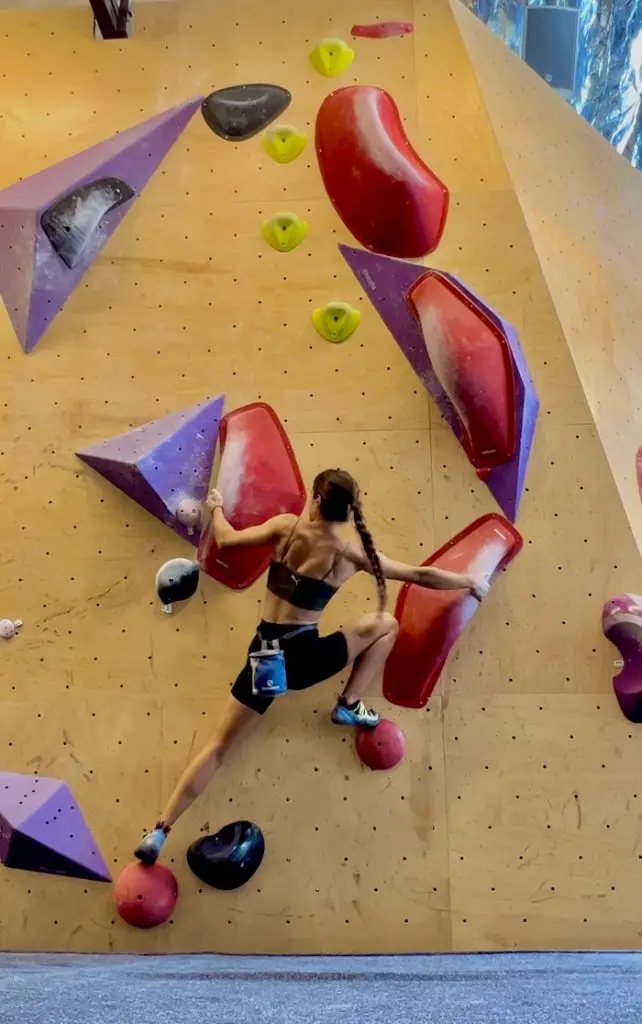
There are various factors that influence a boulder’s difficulty: How good are the hand and foot holds? How far apart are they? How steep is the boulder? How many moves are there? Unfortunately, there is no precise and quantifiable system for translating all these factors into a number, but read on to get a better understanding of what to expect depending on the grade.
Starting with a V0 climb, imagine a gentle introduction to the world of bouldering. This climb is like a friendly handshake from the rock, with easy-to-grasp holds and straightforward movements. You’ll find yourself using basic techniques and relying on fundamental strength to conquer this beginner-friendly challenge.
Now, fast forward to a V6 climb, and the game gets serious. The holds become smaller, the angles steeper, and the puzzle pieces start fitting together in unexpected ways. This is where technique and body positioning become crucial. You’ll need to execute intricate sequences of dynamic movements, requiring a blend of power, balance, and mental focus to overcome the crux of the climb.
Moving up the ladder of difficulty, a V10 climb enters the realm of elite climbers. Picture yourself facing an intimidating wall, covered in microscopic holds that demand every ounce of strength and precision. The sequences become intricate and require extraordinary body control. You’ll find yourself grappling with explosive moves, delicate footwork, and razor-sharp focus as you navigate the intricacies of this challenging boulder.
But wait, there’s more. Brace yourself for the V17 boulder, a mythical beast that only a handful of climbers on the planet dare to attempt. We’re talking about gravity-defying moves, minuscule holds that seem invisible to the naked eye, and an otherworldly level of strength, flexibility, and determination. Climbing at this level is like dancing with the impossible, pushing the boundaries of human capability and defying the laws of gravity.

Grades are subjective though and are based on the climber’s personal experiences on the boulder at hand and in relation to other boulders of similar grades. Sometimes boulders will feel hard for the grade and other times soft. An ‘easy’ overhung route with a dyno might seem hard for someone who is better at slabs but that same slab route might be graded harder than the dyno.
It’s so easy to get caught up with the grades, but it’s a good idea not to place too much weight on grades while climbing. Instead, simply use them as a guide to find the type of challenge you are looking for.
Bouldering Grades vs Climbing Grades
Bouldering and sport climbing are two siblings in the world of climbing. And just like siblings, they each have their unique characteristics and, of course, their very own grading scales. It’s a bit like comparing apples to oranges. As someone who predominately did bouldering, I always wondered, if I can conquer a V6 boulder, what kind of sport climbing routes can I tackle?
While there’s a general rule of thumb that equates a V0 boulder problem to a 5.10d on the Yosemite Decimal System, the reality is a bit more complex, especially when it comes to climbing gyms. Trust me, the grading game takes on a life of its own indoors! In my experience, a V0 boulder in the gym is more akin to a 5.8 route.
Those who have dabbled in both bouldering and sport climbing know that these sports are quite different. Sport climbing demands endurance, as you embark on a vertical marathon that tests your stamina and mental resilience. On the other hand, bouldering unleashes your inner superhero, calling for powerful, dynamic movements that leave you feeling exhilarated and ready for more.
When a boulderer delves into the world of sport climbing, they’ll quickly realize that exhaustion and that pumped feeling become constant companions. Climbing for longer periods of time? It’s a whole new challenge! I learned that the hard way when I went on a climbing trip to Thailand.
Because both disciplines demand different things, their grades can’t be used interchangeably and you can’t really compare them to one another.
TOP TIP: If you get confused between the French sport climbing grades and the Font-Scale, remember that the Font-Scale always used capitalized letters while the sport grades use small letters eg 6A = bouldering and 6a = sport climbing.
Ready To Start Crushing?
Bouldering grades are an important part of the discipline as they allow the climber to guide their experience and find appropriate challenges. Both the Vermin Scale and the Font Scale work equally well to classify difficulty; however no system is perfect and some boulders will always feel hard or soft for the grade they are given. I hope this guide has been useful to you and shed some light on the common grading scales bouldering.
Bouldering Grades FAQs



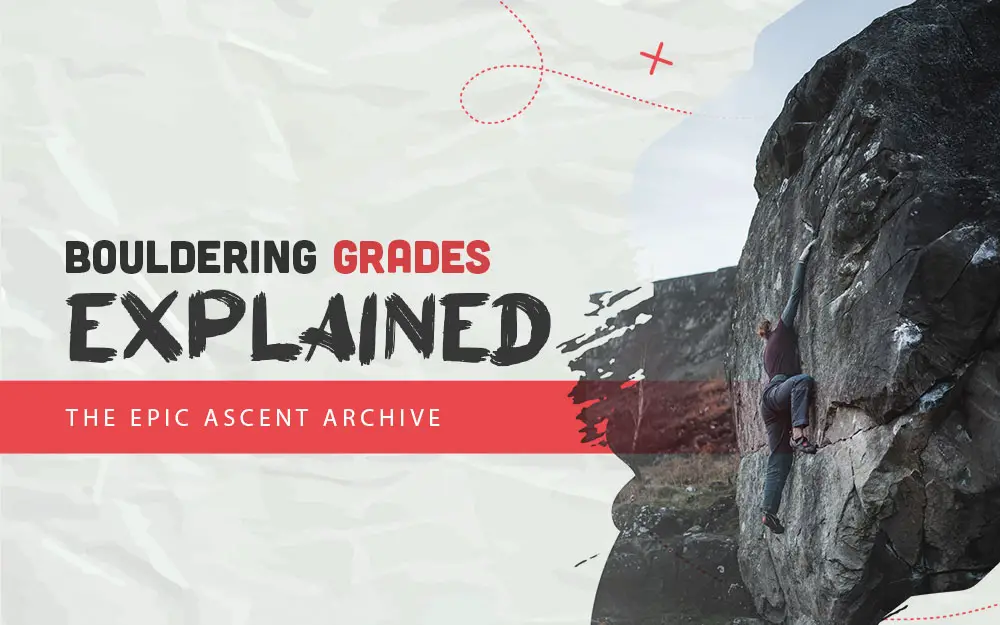
Hi, are there official descriptors for each V level? Based on the moves, distance between holds, directions, and so on? I want to convince the route setters of my climbing gym that their V3 routes are way too difficult for any real V2 climber to reach. Thanks.